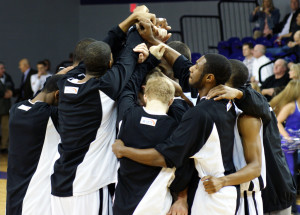Stages of Team Development
Understanding the Stages of Team Development is a vital piece of knowledge for any coach to have. By having the knowledge about what the stages of team development are, a coach can then go about building techniques and strategies required to make this process as efficient and effective as possible. The stages of team development as defined by Dr Bruce Tuckman (1965) will be used as the blue print for discussion in this post.
There a number of different stages any group moves through before becoming a team. Just because a group starts on the path to becoming a team does not in itself ensure they can will reach the final stages. It takes time, planning, and constant attention to ensure the right results are achieved and adversity along the way does not shake the group apart.

The Stages of Team Development are:
- Forming
- Storming
- Norming
- Performing
- Adjourning
Each one of the stages of team development has its own traits and symptoms. It is these individual traits and symptoms that will help a coach identify where along the stages of team development the group is. Developing a range of specific strategies for each of the stages of team development will ensure a coach is always able to ensure momentum for a group in moving forward and continuing along the pathway to becoming a high performing team.
So what do each of the stages of team development mean?
During the Forming stage of team development the group of individuals, come together. Individuals meet, often in a very controlled environment. In sport it is not unusual for players to be familiar with some of the other individuals coming together to form the new group or competition team. However, in these situations the forming still occurs.
The next stage is Storming. During the storming stage of team development conflict starts to emerge. Often an individual’s ideas are challenged and they are asked to make concessions in some way to conform to the groups own identity. In a sporting context, an example of this might be where a player is asked to perform within a certain style of play contrary to what they are comfortable and familiar with.
The third stage is Norming. In the norming stage of team development, the individuals start to see themselves as being part of a team. The individuals are now well on their way to being a group and working towards a team environment. In the sporting context, a coach might see players start to support and help one another during superficial situations. An example might be players huddling sporadically. The activity is seen to be of use and maybe wanted by the coach, but not fully embraced as happening automatically.
The next stage is Performing. During the performing stage of team development, the team becomes self-sufficient in reaching a high performance environment. Characteristics of communication at this time is often open, honest and happens regularly. In a sporting situation, a team within this stage will have leadership characteristics being displayed by individuals on a regular basis. Ownership over the team’s performance becomes driven more and more by the members of the team and less heavily dependent on the coach being the catalyst to get things going.
The final stage is Adjourning. The adjourning stage is where the team splits apart. This is really the purpose of the team has been completed or time runs out on the task. For sports teams this is simply where the team’s season ends and players look to the next season. For a senior team that does not need to separate each year, there will still be new players drafted, traded or simply move on which starts the stages of team development all over again.
Understanding the stages of team development helps set a course for coaches by helping define what can be expected and achieved to reach the next level. This means a better outcome from activities and a quicker pathway to high performance.
Reference
Tuckman, Bruce W. (1965) ‘Developmental sequence in small groups’, Psychological Bulletin,
63, 384-399. The article was reprinted in Group Facilitation: A Research and Applications
Journal – Number 3, Spring 2001 and is available as a Word document:
http://dennislearningcenter.osu.edu/references/GROUP%20DEV%20ARTICLE.doc. Accessed
June 20, 2013.




Leave a Reply